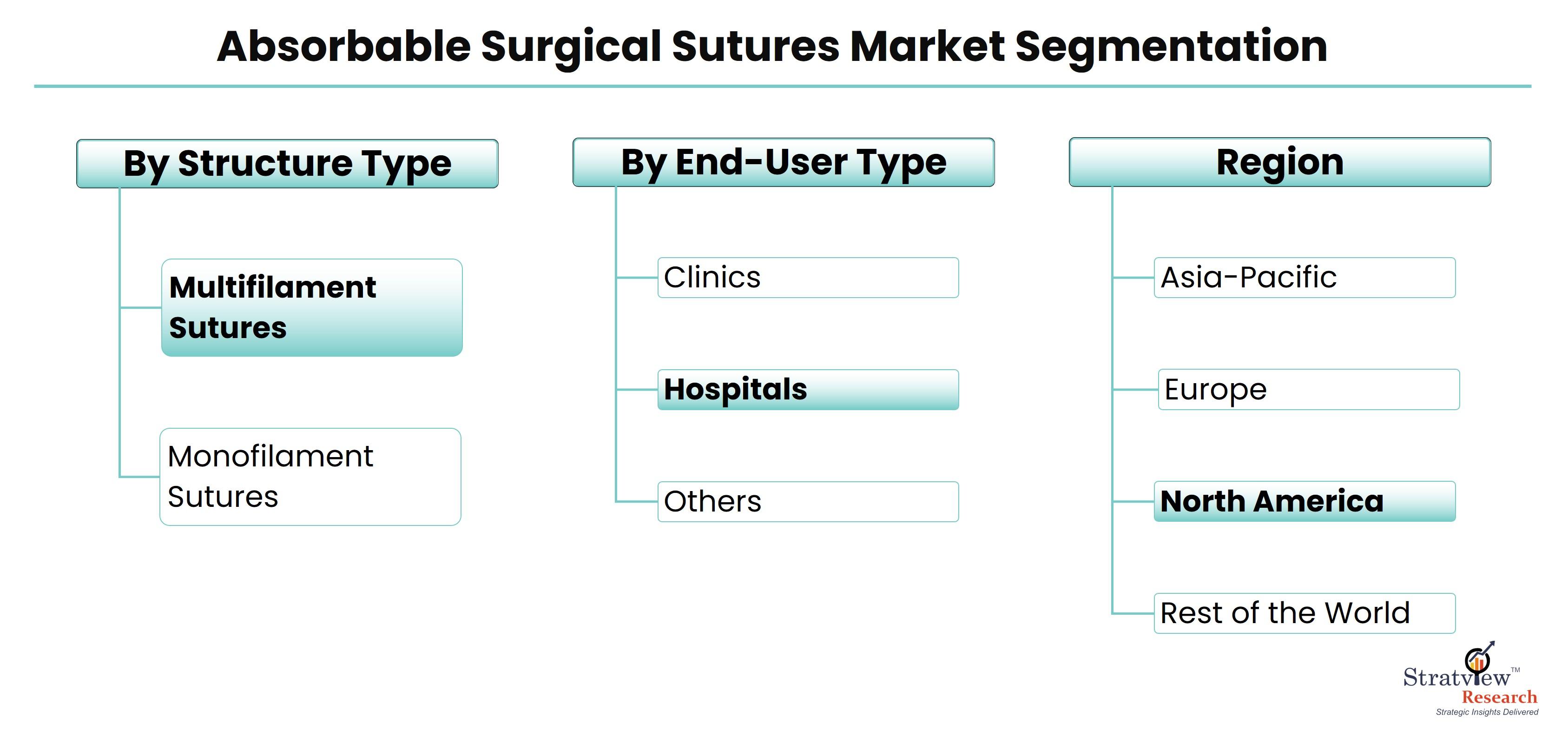According to Stratview Research, the absorbable surgical sutures market is likely to witness a steady CAGR of >5%, during the forecast period. Over the years, there has been a growth in health conditions related to skin and peripheral vascular surgery, which has boosted the growth of the market for absorbable surgical sutures. Furthermore, the growing elderly population and increasing prevalence of musculoskeletal diseases are expected to have a significant impact on the market demand, thus fueling the growth of the market over the forecast period.
In the intricate tapestry of modern medicine, surgical sutures play a pivotal role, seamlessly stitching wounds and facilitating the healing process. Among the various types of sutures, absorbable surgical sutures stand out as a remarkable innovation that has transformed the landscape of surgical interventions. This article is a journey through the "Thread of Healing," delving into the dynamics, advancements, and trends that define the absorbable surgical sutures market.
- The Essence of Absorbable Sutures:
Absorbable surgical sutures are threads or fibers used by surgeons to stitch wounds, and what sets them apart is their ability to be absorbed by the body over time. Unlike traditional non-absorbable sutures that require removal after a certain period, absorbable sutures dissolve, eliminating the need for a second procedure.
- Market Dynamics and Growth:
The absorbable surgical sutures market is dynamic, driven by factors such as the increasing number of surgical procedures, advancements in surgical techniques, and the growing preference for minimally invasive surgeries. The market's growth is also influenced by the rising demand for efficient wound closure solutions.
- Types of Absorbable Sutures:
The absorbable sutures market encompasses various types, each designed for specific applications and healing durations. Examples include polyglycolic acid (PGA), polylactic acid (PLA), polydioxanone (PDO), and caprolactone-based sutures. Understanding the characteristics of each type is crucial for surgeons and healthcare professionals.
- Advancements in Material Science:
The evolution of absorbable sutures reflects the advancements in material science. Researchers continually explore new materials and formulations to enhance the tensile strength, biocompatibility, and absorption profile of sutures. This emphasis on material science contributes to the development of sutures tailored for diverse surgical needs.
- Biocompatibility and Reduced Inflammation:
One of the key advantages of absorbable sutures is their biocompatibility. These sutures minimize the risk of allergic reactions and inflammation, promoting a smoother healing process. The focus on biocompatibility aligns with the broader trend in healthcare towards patient-centered and minimally invasive approaches.
- Applications Across Surgical Specialties:
Absorbable sutures find applications across various surgical specialties, including general surgery, orthopedics, gynecology, and ophthalmology. The versatility of these sutures allows surgeons to choose the most suitable option for specific procedures, contributing to improved patient outcomes.
- Market Challenges and Innovations:
Despite their widespread use, the absorbable sutures market faces challenges such as cost considerations, varying absorption rates, and the need for continuous innovation. Ongoing research seeks to address these challenges, with innovations ranging from antimicrobial coatings to smart sutures that provide real-time feedback on wound healing.
- Sustainability in Focus:
Sustainability is becoming an increasingly important consideration in the absorbable surgical sutures market. Manufacturers are exploring eco-friendly materials and production processes, aligning with the global push towards sustainability in healthcare. Biodegradable sutures are emerging as a promising option in this regard.
- Integration of Technology:
Technology is finding its way into the world of absorbable sutures, with the integration of smart features and bioresorbable sensors. These technological advancements aim to enhance postoperative monitoring, allowing healthcare providers to track the healing process remotely and intervene if necessary.
- Future Trends and Prospects:
The future of the absorbable surgical sutures market holds exciting possibilities. Anticipated trends include the development of advanced biomaterials, personalized sutures tailored to individual patient needs, and increased collaboration between researchers, surgeons, and industry stakeholders to drive innovation.
Conclusion: The Unbroken Thread of Progress
In the ever-evolving field of surgery, absorbable surgical sutures stand as a symbol of progress—a thread that weaves together advancements in materials, technology, and patient care. Navigating the absorbable sutures market reveals not just a tool for wound closure but a dynamic and innovative aspect of modern healthcare. As we move forward, the unbroken thread of progress in absorbable sutures continues to stitch together the pursuit of better outcomes, faster healing, and a more patient-centric approach to surgery.
